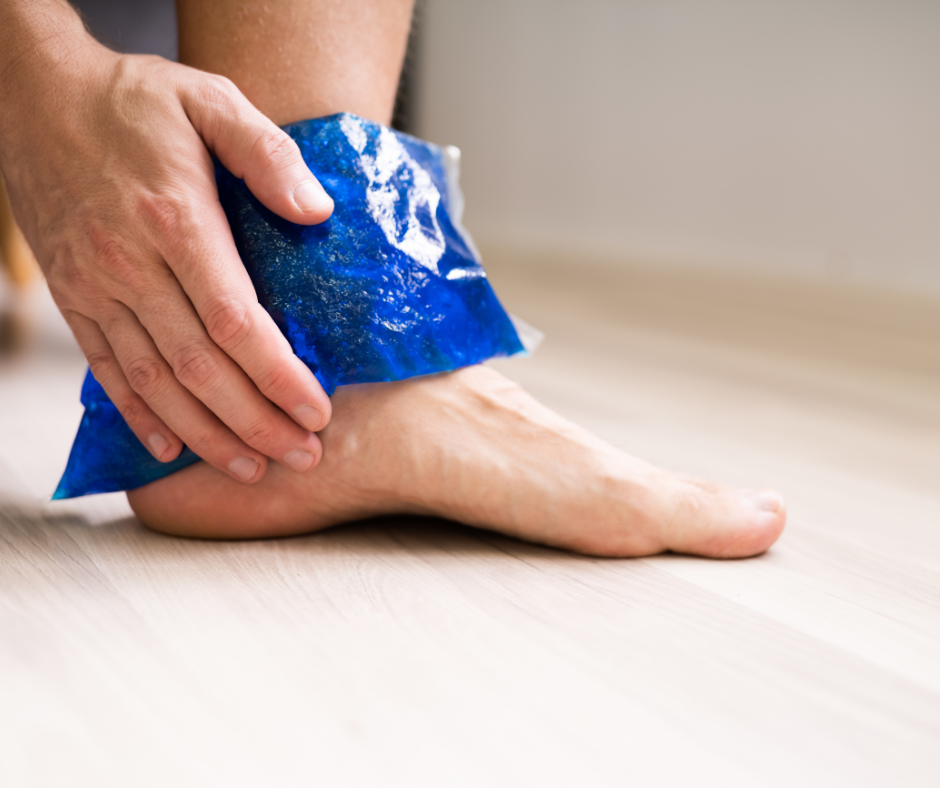No one wants to get hurt, but treating common running injuries quickly is the key to staying on the pavement. Running is a fantastic form of exercise that offers numerous physical and mental benefits. However, like any physical activity, running carries the risk of injuries.
Of course prevention is key when it comes to running injuries. Some ways to prevent some of the top injures are warming-up and cooling down, stretching, strength training and taking rest days. We go in-depth on preventing running injuries in the article, “Top Running Injuries and How To Avoid Them.”
It is worth noting that if you feel you are injured, talk to a medical professional about the injury and how to treat it. Articles like this are to help make you aware of the injuries you could encounter on your running journey. Getting a diagnosis should come from your doctor or physical therapist.
Whether you’re a seasoned runner or a beginner, it’s essential to be aware of common running injuries and understand how to deal with them effectively. In this article, we will explore the most prevalent running injuries and provide practical strategies for managing and recovering from them.
Shin Splints:

Shin splints are characterized by pain in the front of the lower leg, specifically along the shinbone. To deal with shin splints effectively, it’s crucial to identify the cause. Common causes include overuse, improper footwear, running on hard surfaces, and muscle imbalances. The following strategies can help alleviate shin splints:
- Rest and reduce activity levels to allow the injured area to heal.
- Apply ice to the affected area for 15-20 minutes several times a day.
- Stretch and strengthen the muscles surrounding the shin, particularly the calf muscles.
- Consider cross-training activities, such as swimming or cycling, to maintain cardiovascular fitness without exacerbating the injury.
- Gradually resume running, ensuring proper form and gradually increasing intensity and distance.
IT Band Syndrome:

Iliotibial (IT) band syndrome is characterized by pain on the outside of the knee. It is often caused by repetitive friction between the IT band and the knee joint. To manage IT band syndrome effectively, consider the following steps:
- Rest and avoid activities that exacerbate the pain.
- Apply ice to the affected area after activity to reduce inflammation.
- Stretch and strengthen the muscles surrounding the hips and thighs, including the IT band.
- Use a foam roller to massage the IT band and release tension.
- Gradually reintroduce running, focusing on maintaining proper form and gradually increasing distance and intensity.
Plantar Fasciitis:

Plantar fasciitis is a common injury that causes heel pain due to inflammation of the plantar fascia—a thick band of tissue running along the bottom of the foot. To effectively manage plantar fasciitis, consider the following approaches:
- Rest and avoid activities that worsen the pain.
- Apply ice to the affected area for 15-20 minutes several times a day.
- Perform stretching exercises for the calf muscles and the plantar fascia.
- Consider using orthotic inserts or arch supports in your shoes to provide additional support.
- Gradually resume running, starting with shorter distances and gradually increasing as the pain subsides.
Achilles Tendinitis:

Achilles tendinitis is the inflammation of the Achilles tendon, which connects the calf muscles to the heel bone. To deal with Achilles tendinitis effectively, follow these steps:
- Rest and avoid activities that aggravate the pain.
- Apply ice to the affected area to reduce inflammation.
- Perform gentle stretching exercises for the calf muscles and Achilles tendon.
- Consider using heel lifts or shoe inserts to reduce stress on the tendon.
- Gradually reintroduce running, focusing on shorter distances and incorporating rest days in between runs.
Runner’s Knee:

Runner’s knee is characterized by pain around or behind the kneecap. It is often caused by overuse, muscle imbalances, or improper running mechanics. To manage runner’s knee effectively, consider the following strategies:
- Rest and avoid activities that worsen the pain.
- Apply ice to the affected area after activity to reduce inflammation.
- Strengthen the muscles surrounding the hips, thighs, and knees through targeted exercises.
- Consider using knee straps or braces for additional support.
- Gradually resume running, paying attention to proper form and gradually increasing distance and intensity.
Conclusion:
Treating common running injuries can be frustrating and hinder your progress. However, with the right approach, injuries can be effectively managed, allowing you to return to running stronger and healthier. Remember to listen to your body, seek professional advice if needed, and gradually reintroduce running while focusing on appropriate form and technique. By following these strategies, you can overcome common running injuries and continue to enjoy the physical and mental benefits of this wonderful sport.








